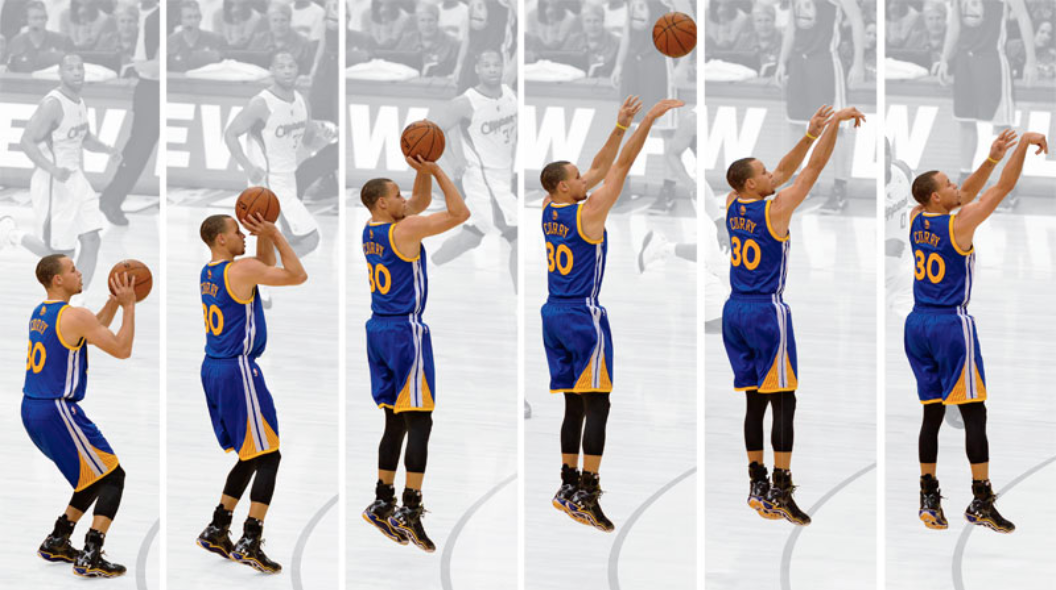How to Shoot Better Using Projectile Motion
Who knew that physics might be your best teammate on the basketball court?
The long-awaited return of the Philippine Ching Yuen Athletic Association season is here; after a year of rigorous practice, the MGC New Life basketball team will finally see all their efforts come to fruition (hopefully).
Shooting is arguably the most crucial skill in basketball, which is why our MGCNL basketball players practice this skill every training session. In basketball, precision is critical, and nobody understands that more than NBA players who spend their whole lives playing basketball and practicing hard.
Many basketball players, even those from the NBA, look up to the legends: Michael Jordan, Lebron James, Kobe Bryant, and many more. However, one NBA great stands out from the rest – Stephen Curry. Known for his excellent shooting prowess, he has not just amazed and inspired many with his abilities but he has also revolutionized the NBA with his shooting.
You may ask, how do I shoot as well as Stephen Curry?
Steph Curry Drains the Game Winner vs Oklahoma City
The Basketball Coach
To be a great shooter, you need a good shooting technique, but it doesn’t have to be perfect. There is no “secret formula” nor a “perfect technique.” Great shooters like Stephen Curry have forms that they are comfortable with and have honed to perfection. However, there are fundamentals to achieving a great basketball shot.
First, always maintain a stable and balanced shooting stance. Successful shooting requires a good balance. Position your feet shoulder-width apart, adopting a slightly staggered stance that is comfortable for you.
Second, focus on how you grip the ball. Your fingers should be spread apart enough to balance the ball with one hand, and it should sit right on your finger pads. Maintain a slight gap or space between your shooting hand’s palm and the ball.
Third, try to shoot the ball with one smooth motion, making sure that it does not go behind your head.
Lastly, maintain a consistent follow-through. Your wrists should be relaxed, and your fingers must point to where you shot the ball. Make sure you hold this position until the ball hits the target.
The Physics Teacher
Now, let’s talk about projectile motion.
A projectile refers to any object launched into space with gravity as the only external force acting upon it. While other forces may have some impact on a projectile, gravity has the most effect on it.
When an object is thrown at an angle close to the Earth's surface, it follows a curved path due to a constant acceleration towards the Earth's center. This trajectory is called projectile motion.
In projectile motion, two distinct but simultaneous motions occur. Firstly, along the x-axis, the object moves horizontally with a constant velocity. Secondly, along the y-axis, the object has a uniform acceleration, governing its vertical (downward) motion.
In horizontal projectile motion, there is no acceleration in the horizontal direction; thus, the object's velocity in the horizontal plane stays constant. On the other hand, in vertical projectile motion, the only force acting on the object is gravity, causing a constant downward acceleration (g).
Point O, the intersection of the x- and y-axis, is called the point of projection. This is where the projectile is launched from. Theta (θ) represents the angle of projection, the angle at which the projectile is launched.
The x-axis represents range, the horizontal distance the projectile is launched – also represented by the distance OB. The y-axis represents the vertical distance the projectile traveled. The time taken by the projectile traveling from O to B is called the time of flight.
Going back to basketball, for three-pointers or longer-range shots, one must adjust the force used and/or the angle of projection. A shot with slightly more force or a lower angle of projection is necessary to cover the extended range.
Additionally, the space available for the ball to enter the rim is proportional to the arc or angle of projection (entry angle in the figure) of the shot. Imagine a circular piece of paper on a table. Looking at it from the height of the table, it’s nearly invisible, but if you view it from above, you can see its full area.
Similarly, higher arcs provide more relative area for the ball to enter the rim. The ball is too big to go through the hoop without striking the rim at extremely low arcs. Theoretically, one should shoot with as high an arc as possible.
However, nobody is perfectly consistent with their shot arc. In fact, an NBA-range three-point shot made at a lower angle will be more accurate than one made at a higher angle, even if the force and degrees of deviation (leeway) remain constant.
Because of this discrepancy, it is paramount to find a balance between angling your shot high to allow a larger area for the ball to swish and angling your shot low to prevent a considerable shot deviation. Ideally, this balance is found at an optimal shot angle of 45°. Shooting at 45° maximizes the entry angle while minimizing the spread by imperfections. Additionally, in projectile motion, having an angle of projection of 45° allows you to maximize the range using the same amount of force.
Ultimately, no matter how much science you delve into, only practice will make your shot perfect. However, you must also understand the science behind it to make your shooting practice count. It's not just about throwing the ball and praying that it goes in—it's about getting the right force and angle every time for a shot that hits the mark consistently.
Sources:
7 Tips To Improve Your Shooting Mechanics - USA Basketball
Projectile Motion - Definition, Formula, Examples, Concepts, Video, and FAQs




